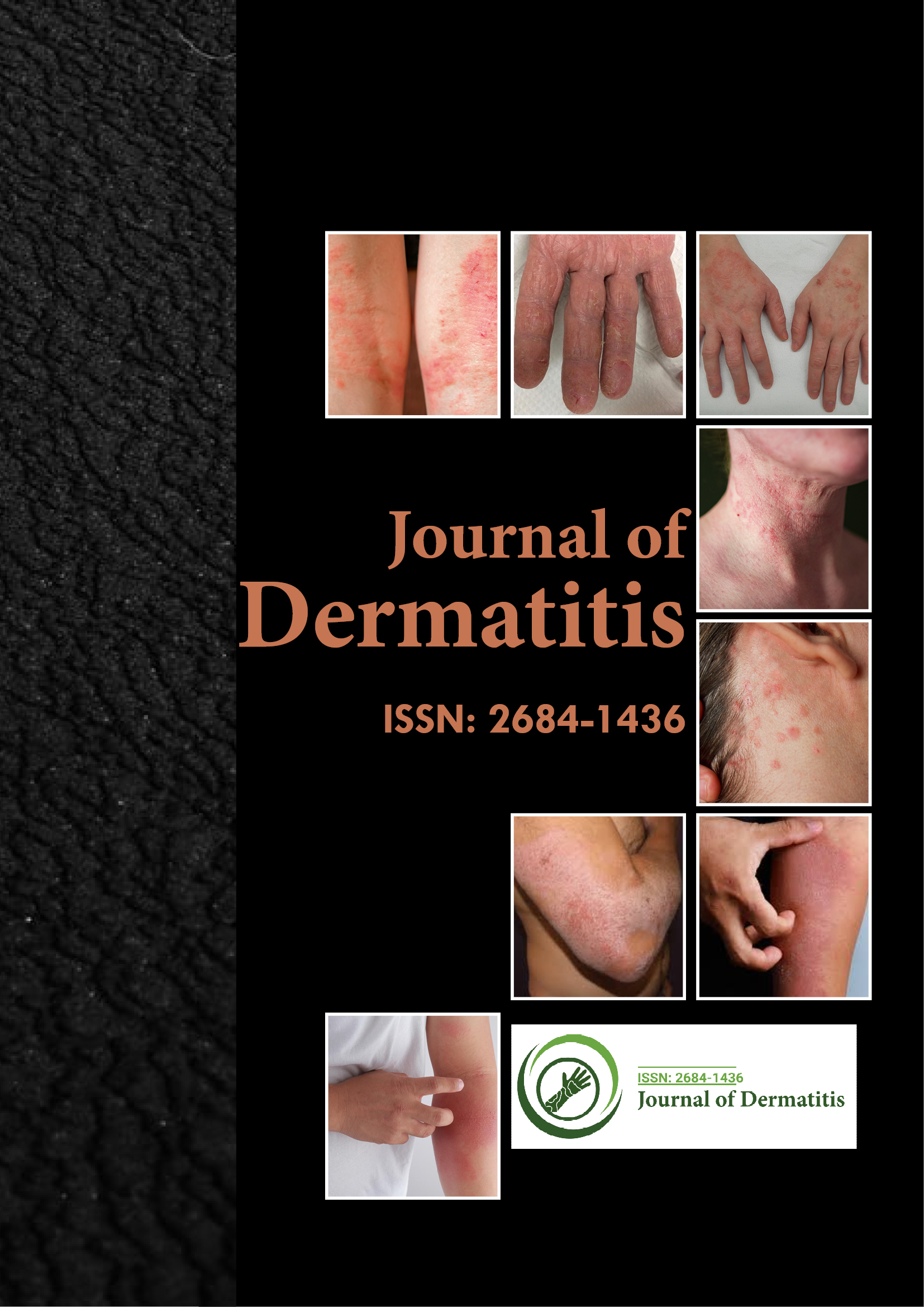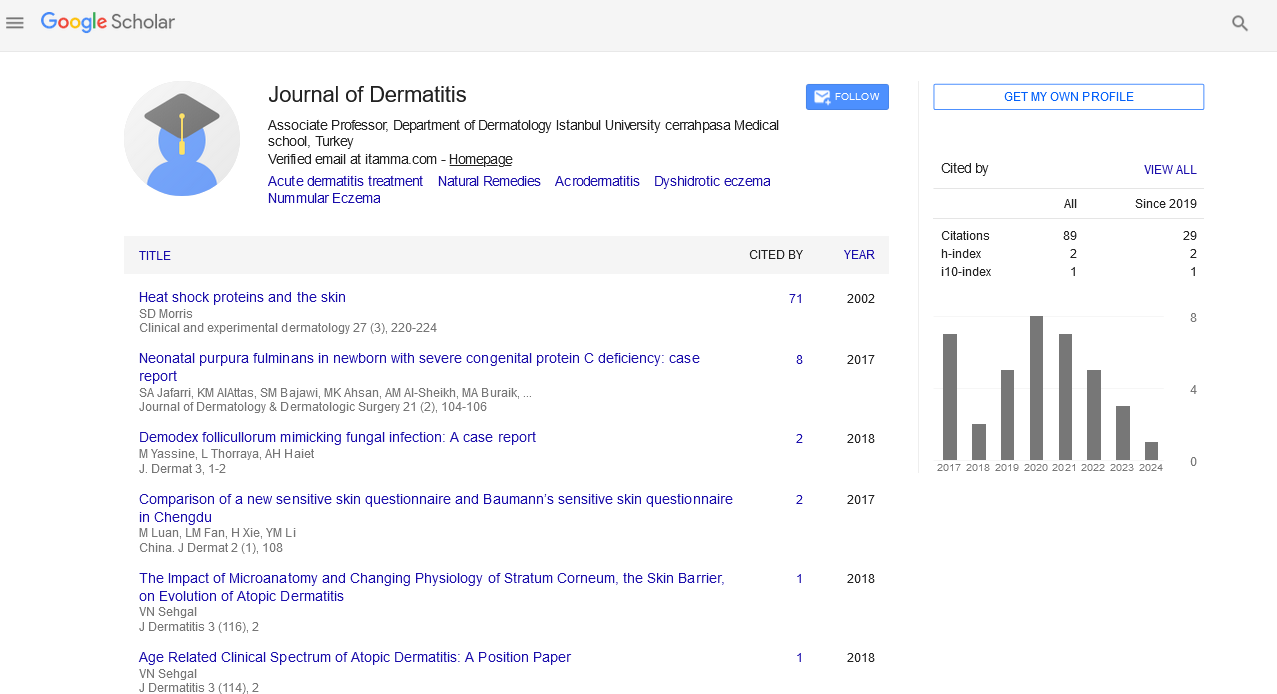Indexed In
- RefSeek
- Hamdard University
- EBSCO A-Z
- Euro Pub
- Google Scholar
Useful Links
Share This Page
Journal Flyer

Open Access Journals
- Agri and Aquaculture
- Biochemistry
- Bioinformatics & Systems Biology
- Business & Management
- Chemistry
- Clinical Sciences
- Engineering
- Food & Nutrition
- General Science
- Genetics & Molecular Biology
- Immunology & Microbiology
- Medical Sciences
- Neuroscience & Psychology
- Nursing & Health Care
- Pharmaceutical Sciences
Perspective - (2024) Volume 9, Issue 1
Perioral Dermatitis: Effective Treatments and Prevention
Semon Alla*Received: 02-Mar-2024, Manuscript No. JOD-24-26056; Editor assigned: 05-Mar-2024, Pre QC No. JOD-24-26056 (PQ); Reviewed: 21-Mar-2024, QC No. JOD-24-26056; Revised: 27-Mar-2024, Manuscript No. JOD-24-26056 (R); Published: 05-Apr-2024, DOI: 10.35248/2684-1436.24.9.233
Description
Perioral dermatitis is a chronic skin disease of the face that is significant in dermatology due to its frequent occurrence and potential impact on quality of life. The lips, nose, and eyes are surrounded by clusters of small, flesh-colored, swelling, red pimples. Before starting treatment, a clear diagnosis is required because it mimics conditions like rosacea or acne. The main course of therapy for perioral dermatitis is to avoid using irritating cosmetics and topical steroids as these may exacerbate the condition. Doctors commonly administer topical antibiotics like metronidazole or clindamycin in addition to oral antibiotics like tetracycline or doxycycline to reduce inflammation and bacterial involvement.
Preventing recurrences requires an understanding of the underlying causes and triggers, which may include stress, fluoride in toothpaste, and hormonal fluctuations. Dermatologists also emphasize to their patients the value of avoiding harsh skincare products and educating them about gentle skincare methods. Healthcare providers can improve patient outcomes and reduce the likelihood of recurrence by providing targeted medicines based on their understanding of perioral dermatitis and its management.
Oral and topical medications are used in combination to treat perioral dermatitis. Removing tropical steroids gradually and cautiously is the key to curing perioral dermatitis that has been caused by their use. One way to help treat this issue is to use non-steroidal anti-inflammatory drug usage more. A skin condition called perioral dermatitis is the source of a rash surrounding the mouth. Rarely, the rash will also develop around the nose, eyes, or genitalia. Perioral refers to the region surrounding the mouth, and dermatitis is an inflammation of the skin. The age group of 20 to 45 years old is more likely to have perioral dermatitis in women. Although it is less prevalent, the sickness can also affect men, children, and older persons.
A kind of periorificial dermatitis known as perioral dermatitis affects the skin surrounding the mouth, nose, eyes, and, in rare cases, the genitalia. On the other hand, doctors refer to the condition that affects the skin surrounding the mouth as perioral dermatitis. Most occurrences of perioral dermatitis afflict adult females up to 45 years of age, and young adults. However, it's known as childhood perioral dermatitis when it affects kids. A more severe version of the disease known as lipoid perioral dermatitis affects people with both light and dark skin tones and results in bigger clusters of bumps that can be red or brown.
A condition that is comparable to granulomatous periorificial dermatitis is granulomatous periorificial dermatitis. Although it can occur in kids with lighter skin tones as well, it is more prevalent in kids with darker skin tones. It typically takes the form of flesh-colored, yellow-brown papules. A rash that looks rough or scaly around the mouth is called perioral dermatitis. These zits normally don't harm the skin directly next to the mouth; instead, they appear a little distance from the lips. Another possibility is that they'll encircle your mouth in a ring.
The rash may occasionally appear around the eyes or nose. It is rare for it to occur around the genitalia as well. Some people with perioral dermatitis get very few pimples and a hardly noticeable rash. Some people could get many bumps that turn into a noticeable rash.
Fair-skinned people may have flesh-colored or hyperpigmented zits that appear red or pink in appearance. Although the bumps resemble pimples, acne is not the same as the bumps. The skin surrounding and beneath the rash may be flesh-toned, pink, red, or inflammatory in appearance. The rash often doesn't hurt, but it could be irritating. Some people with perioral dermatitis may have tightness or mild burning in the affected area, which may be dry or flaky.
Citation: Alla S (2024) Perioral Dermatitis: Effective Treatments and Prevention. J Dermatitis. 9:233.
Copyright: © 2024 Alla S. This is an open-access article distributed under the terms of the Creative Commons Attribution License, which permits unrestricted use, distribution, and reproduction in any medium, provided the original author and source are credited.

